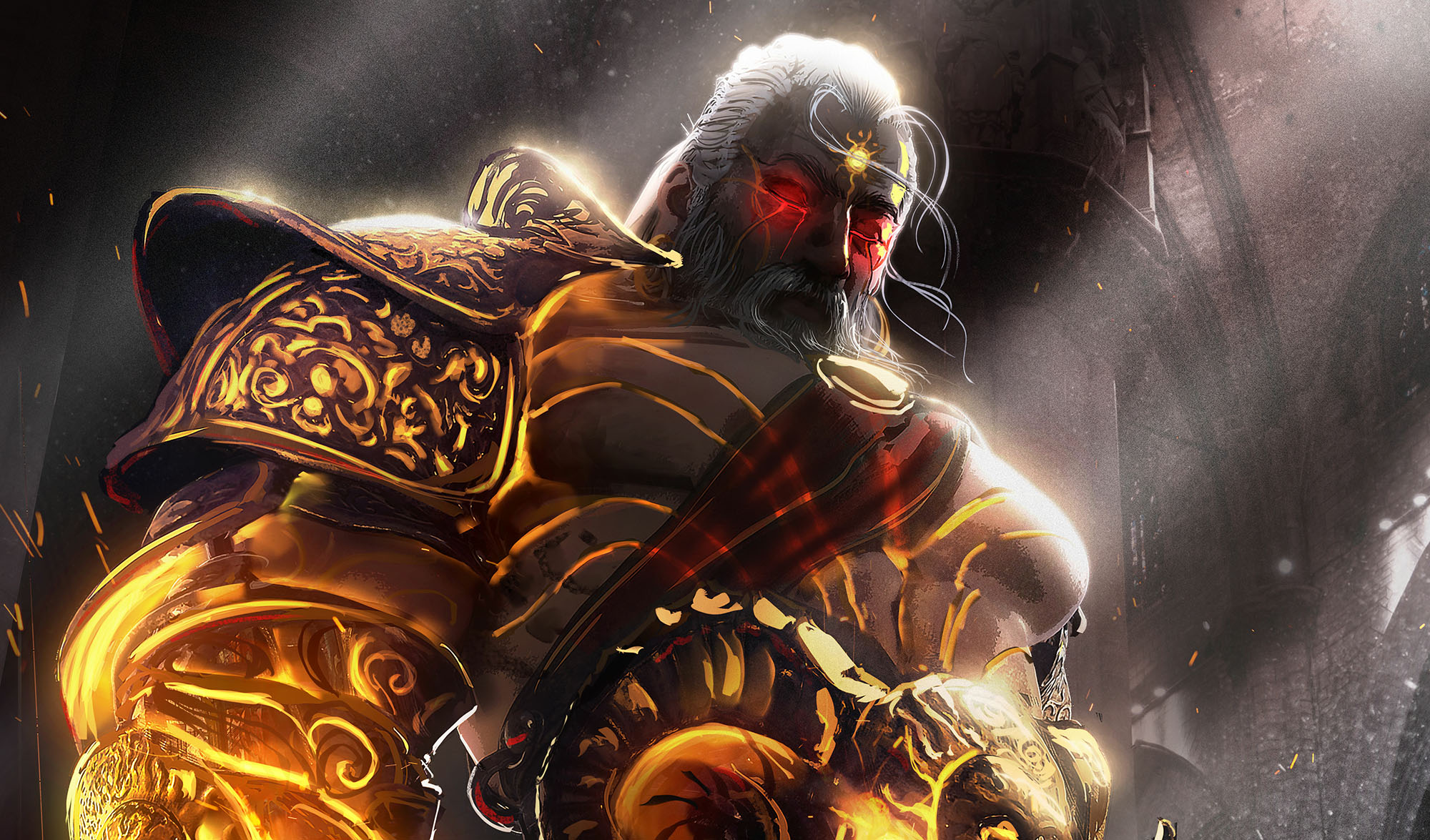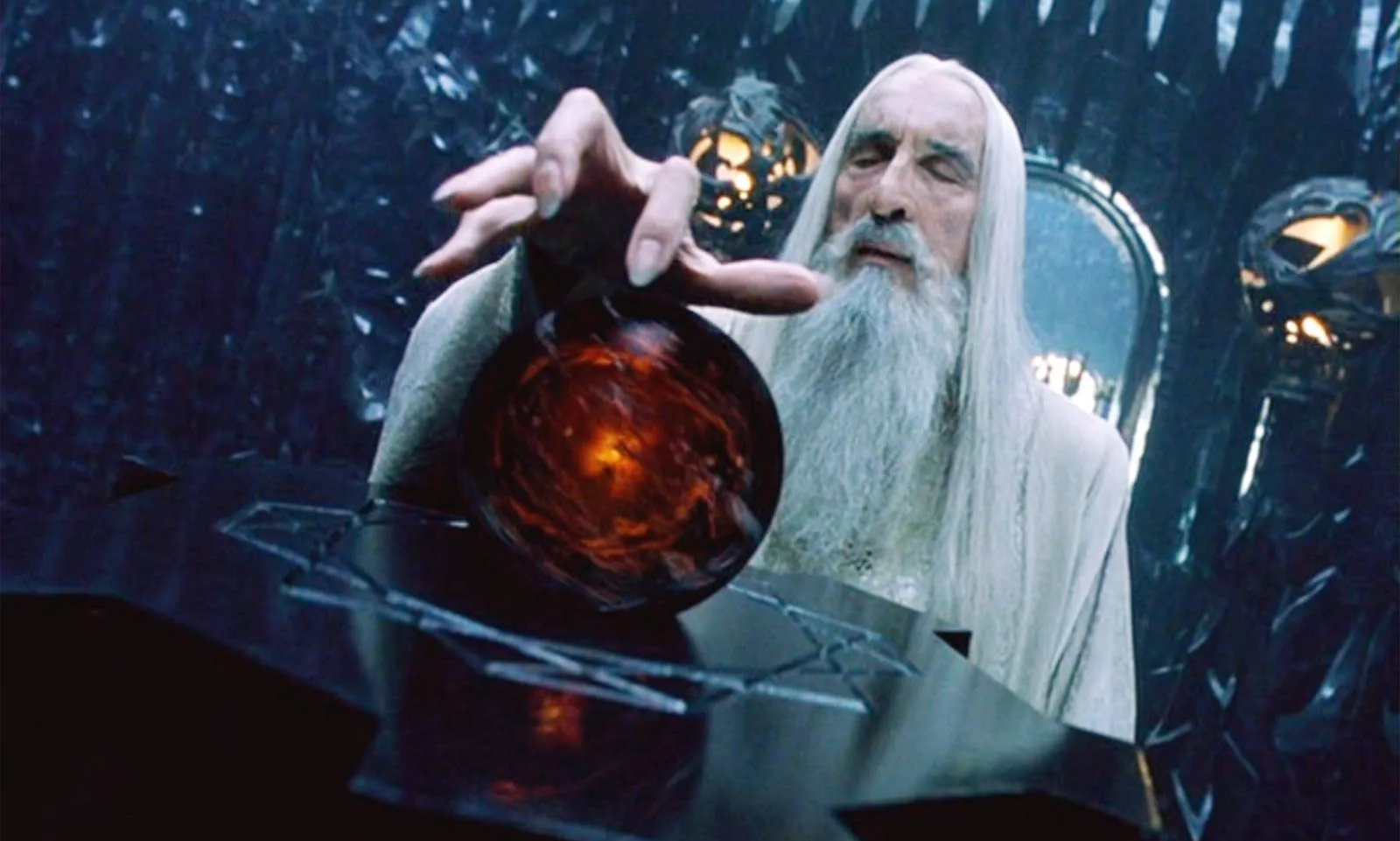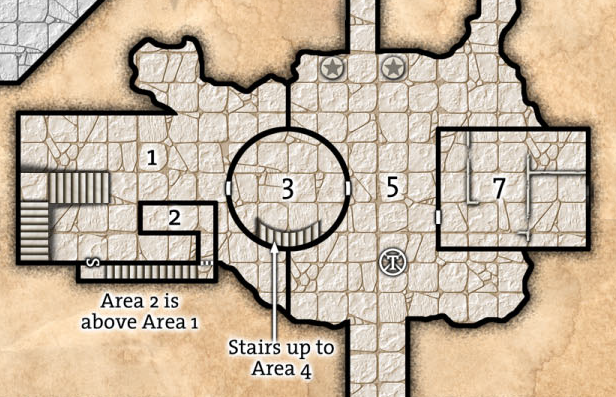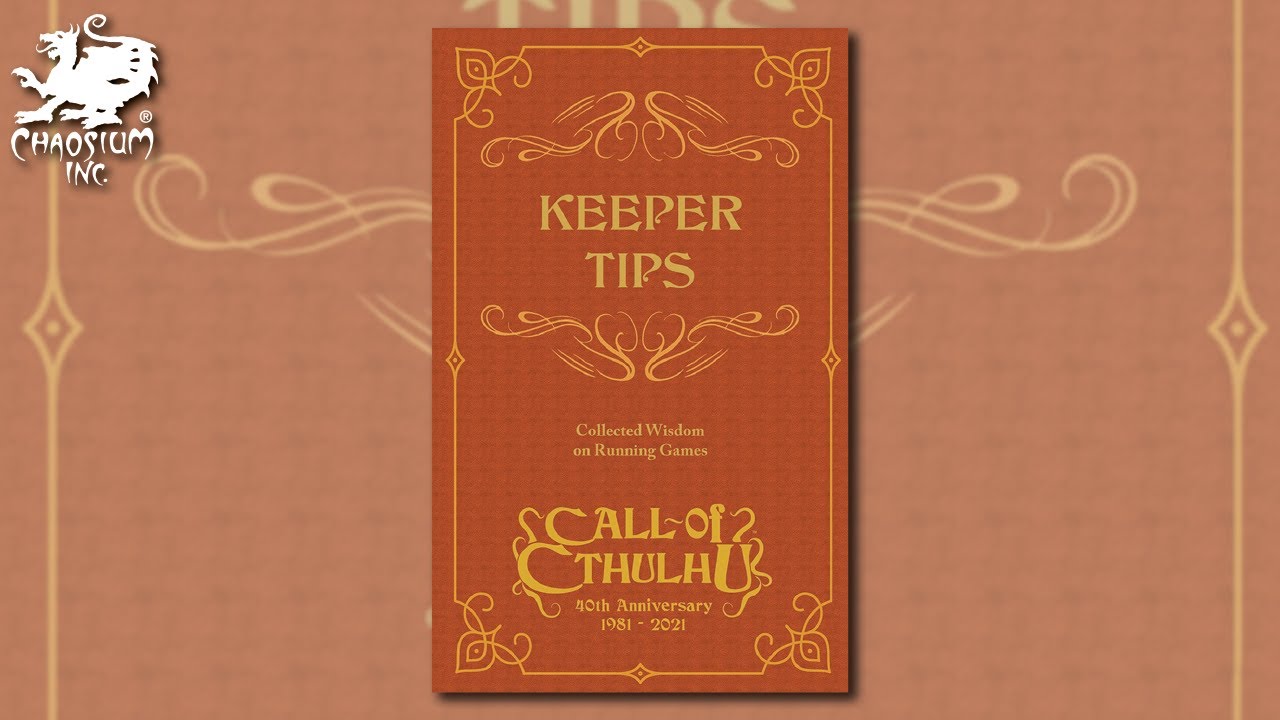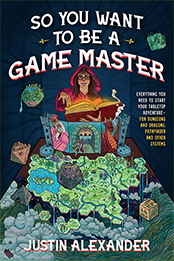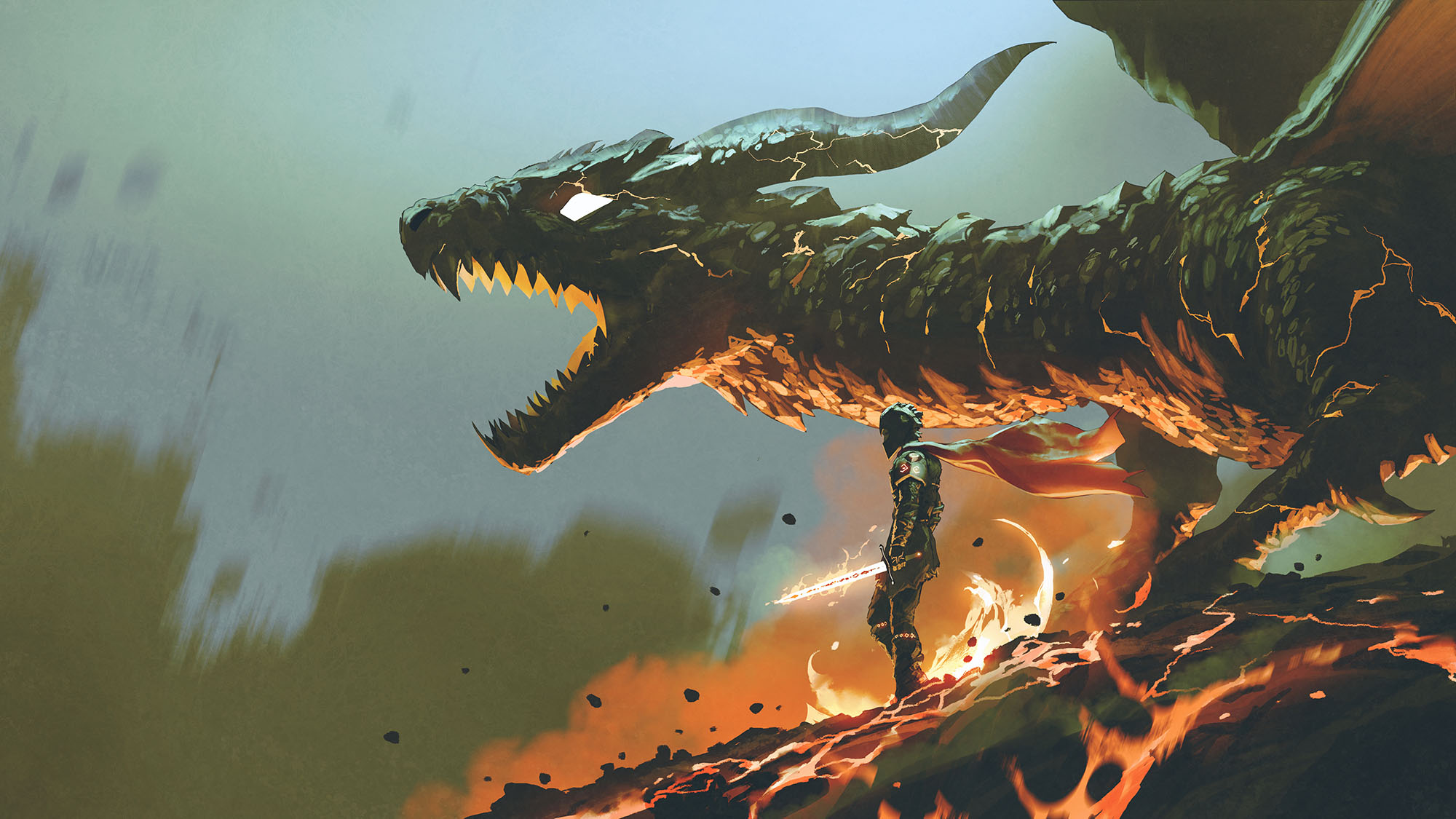
Go to Table of Contents
Let’s cut to the chase: How do you solve the giant problem in Storm King’s Thunder?
(Pun intended.)
DESTROY THE THREAT
The most direct approach would be to simply smash the giants so that none of the giant factions pose a threat.
This can be crudely achieved by going from one giant lair to the next and stabbing giants in the face until there are no more giants, but I think there are both aesthetic and practical problems with this. The short version is that it’s difficult to really take the giant threat seriously if it can be trivially solved by five people acting alone.
This is something a lot of narratives — particularly “chosen one” narratives — get wrong. To understand why, consider two examples that get it right: Star Wars and The Lord of the Rings. Luke, Han, Leia, Chewbacca, and the droids can all be absolutely essential to the rebel victory, but if the Death Star was just blown up by the Millennium Falcon flying solo (pun intended), the stakes would immediately collapse. The same would be true if there were no armies in Middle Earth and Frodo and Sam could just walk up to Mt. Doom unaided and defeat Sauron. In both cases, the heroes are larger than life because they are the essential lynchpins in a much larger effort.
So if the PCs want to pull this off, they’ll need to start forming alliance(s) to make it happen.
PATH OF CONQUEST
The giants are the biggest problem (puns all over the place today), but the root of the problem is the Ordning, and clever PCs can flip this problem around and turn the Ordning into the solution by selecting one of the giant factions and helping them come out on top in the Ordning-Yet-to-Come.
Probably the most straightforward path here is “ally with a giant faction, then help them fight all the other giant clans into submission.” Any clan which has the strength to subjugate the other clans will naturally become Annam’s default pick for the new Ordning.
If you want to push this concept into the campaign, you can easily do so by waiting until the PCs have scored one or two big successes — e.g., crushing one of the giant factions — and then have one of the other giant factions approach them with the idea of forming an alliance. Even better, have two different clans approach them simultaneously, giving the players the opportunity to choose which faction they want to align with. (They could easily end up choosing a third, completely different faction. Or, of course, rejecting the concept entirely and choosing a different path.)
Following this path is a big deal: The choice becomes a crucible in which the characters not only express their most heartfelt beliefs, but shape the future of the Forgotten Realms in a truly fundamental way.
A variant of this idea would be to choose a giant not-of-the-clans and champion them as a new King of the Giants. Harshnag, for example, would be an obvious choice (see Part 3C), but one could easily imagine the players embracing another candidate, such as Zephyros (SKT, p. 33).
Along these same lines, the PCs might champion a clan while also deciding that the current leadership of the clan is kind of shit. (Most of the leaders presented in the book, after all, are villainous jerks.) So stage one of this plan might be removing the troublesome leader and replacing them with someone more amenable to the agenda of the PCs and/or their allies (by staging a formal duel, assassination, or some other surreptitious means).
A DRACONIC CRUSADE
Military campaigns of domination and subjugation, however, are not necessarily the only way a giant clan could have skarra shine upon them.
The reason Annam broke the Ordning is because the giants have allowed the dragons — the ancient enemies of giant-kind — to grow strong. Tiamat, the evil dragon goddess, stirs in her prison, and during the events of the A Tyranny of Dragons campaign she almost managed to escape without the giants doing anything to stop it.
So an alternative path to the Ordning-Yet-to-Come would be to ally with one of the giant clans and help them lead a Draconic Crusade. Such a clan would mark themselves as ready to lead the giants into a new era.
The sequence from Storm King’s Thunder in which Iymrith is hunted down in her lair could obviously serve as a seed here, but there are a number of other dragons detailed in the campaign book as well that we can develop.
A super-ambitious approach here would be to also remix A Tyranny of Dragons and run it simultaneously with Storm King’s Thunder: Annam isn’t angry because the giants were lackadaisical about Tiamat’s threatened return; he’s angry because it’s happening right now. Finding ways to seed the activities of the Cult of the Dragon into Storm King’s Thunder is certainly non-trivial, but probably not overwhelmingly so if you’re using node-based campaign design.
Something to note with any of these “ally with the giants” options for the campaign finale is that they will almost certainly represent a seismic thematic shift in giant society: The new Ordning will have been established on a principle of cooperation between the giants and the “little folk.” As a divine mandate from heaven, this will sink deep into the culture and politics of giant-kind, with ramifications that will be felt for years, decades, and even millennia. This might include stuff like:
- Giant pilgrims coming to the communities of humans, elves, dwarves, and others to help and learn the lessons of the little folk.
- A political alliance between giants and the Lords’ Alliance, perhaps representing a joint effort to wipe out the Cult of the Dragon. (Either initiating a Draconic Crusade, if it hasn’t already begun, or continuing it, perhaps even pursuing the Cult into the East.)
- The founding of a New Ostoria ruled jointly by both giants and little folk.
Tip: You might want to use an epilogue structure for your campaign finale, allowing you to emphasize these long-term effects of the PCs’ actions.
LEAD THE FUTURE
Along similar thematic lines, rather than having the PCs choose their horse for the Ordning race, you could instead have one or more of them saddle up as the new King of the Giants.
There are a few ways you could seed this option into the campaign:
- Giants who are defeated (or who see their leader defeated) by the PCs might bend the knee.
- Outriders of a clan whose citadel the PCs have wiped out might seek them out.
- Giant scholars like Zephyros and/or Countess Mulara (SKT, p. 113) might seek out the PCs to chronicle their deeds, creating — perhaps alongside Harshnag — the beginnings of a giant retinue and counsellors.
- Rogues, exiles, and other lone giants who have become separated from giant society — either before or because of the breaking of the Ordning — might seek the PCs out, either to get revenge on their former clans, in an effort to save their people, or for any other reason that makes sense given the PCs’ agendas and actions.
Old school D&D had the concept of high-level characters simply “attracting followers” due to their renown, and this would follow a similar logic (and tie in nicely with the broader concepts of forming alliances): The PCs are building a rep for themselves, and like Robin Hood or Spartacus or Guan Yu, they can gather a retinue of NPCs inspired by their deeds.
This path can then be escalated with divine connotations, for example:
- Giant pilgrims and/or warrior bands seek out the PCs, claiming to have followed “the beacon of Annam” and to see them “illuminated by the light of Annam.”
- The chosen PC(s) begin receiving cryptic visions from Annam.
This is likely all happening while the PCs are simultaneously pursuing a Path of Conquest, a Draconic Crusade, or both.
In any case, all of these threads can ultimately culminate with the PC(s) actually being anointed by Annam as the new leader of the giants during the forging of a new Ordning. This could happen during a communion with the Eye of the All-Father. (In fact, the PCs being responsible for rediscovering the lost oracle of Ostoria could play a significant role in the divine path.) One could imagine a ceremony in which representatives from all of the giant clans come to the Eye — summoned by decree, drawn by Annam’s will, or brought in captivity — and are present for Annam’s manifestation on the mortal plane.
If any of the PCs are a half-giant or goliath (or something of similar flavor), they would be a natural fit for this, but even that isn’t necessary. It wouldn’t be the first time Annam disowned the giants and spurned their failures. His primary goal remains the restoration of Ostoria as a perfect society on the mortal plane, and the destruction of the dragons who have so often sought (or achieved) Ostoria’s destruction. If he comes to believe that scions of the little folk are the most capable of achieving those goals — helping to fuel a rebirth of giant cultures which have become stagnant and moribund — then a radical transformation of giant society isn’t out of the question.
Perhaps such character(s) might become known as Divine Regents, leading the giants until such time as the Promised King comes at last. (A prophecy which may not be fulfilled until centuries from now.) Or perhaps Annam might give them the divine gift of giantdom, creating a new caste of giants.
Go to Part 5C: Running the Final Act

